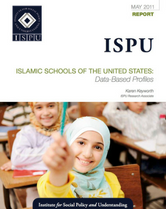
Islamic Schools of the United States: Data-Based Profiles
The very essence of Islamic schools is the teaching of Islam. It is what defines us. We have many Islamic curricula that fulfill the cultural and traditional needs and expectations of parents and communities; however, we continue to desire more spiritual content and real-life applications. We realize that if we want a curriculum for our children, we must look at Islamic curricula through the lens of our children’s needs. What we teach and how we teach are of deep concern, and the need to take up this challenge is now a top priority.
Though such talk has been bubbling up for years, it is only now that educators have the capacity to act in a meaningful and connected way. The Islamic schools league of America (ISLA) is facilitating this national dialogue on school leadership as it relates to spiritual curricula in K-12 Islamic schools and the curricula’s impact on the future of American Muslim children through research, conferences, and online discussions.
Questions persist: What are the Islamic schools of the United States? How many are there? How are they structured? What stage of development are they experiencing: growth, plateau, reduction? How “connected” are they to the larger society and to each other? This essay will provide the major findings of primary research related to full-time K-12 Islamic schools in the United States, helping thereby to create a more accurate data-based profile of them.
Data on Islamic schools are very difficult to obtain. A previous, and the only other known, primary research survey was published in 1989 by the Islamic society of North America (ISNA) in an obscure booklet entitled In-Depth Study of Full-Time Islamic Schools in North America: Results and Data Analysis. In that booklet, the number of full-time Islamic schools was established at approximately fifty; today, there are approximately 235 such schools. However, no national studies other than the ISNA study and this study are known to have been conducted. This research is critical for establishing and identifying community, professionalism, standards, and shared educational philosophies, as well as for providing the American Muslim community and the larger American society with a crucial understanding of full-time Islamic education based on fact rather than conjecture.


